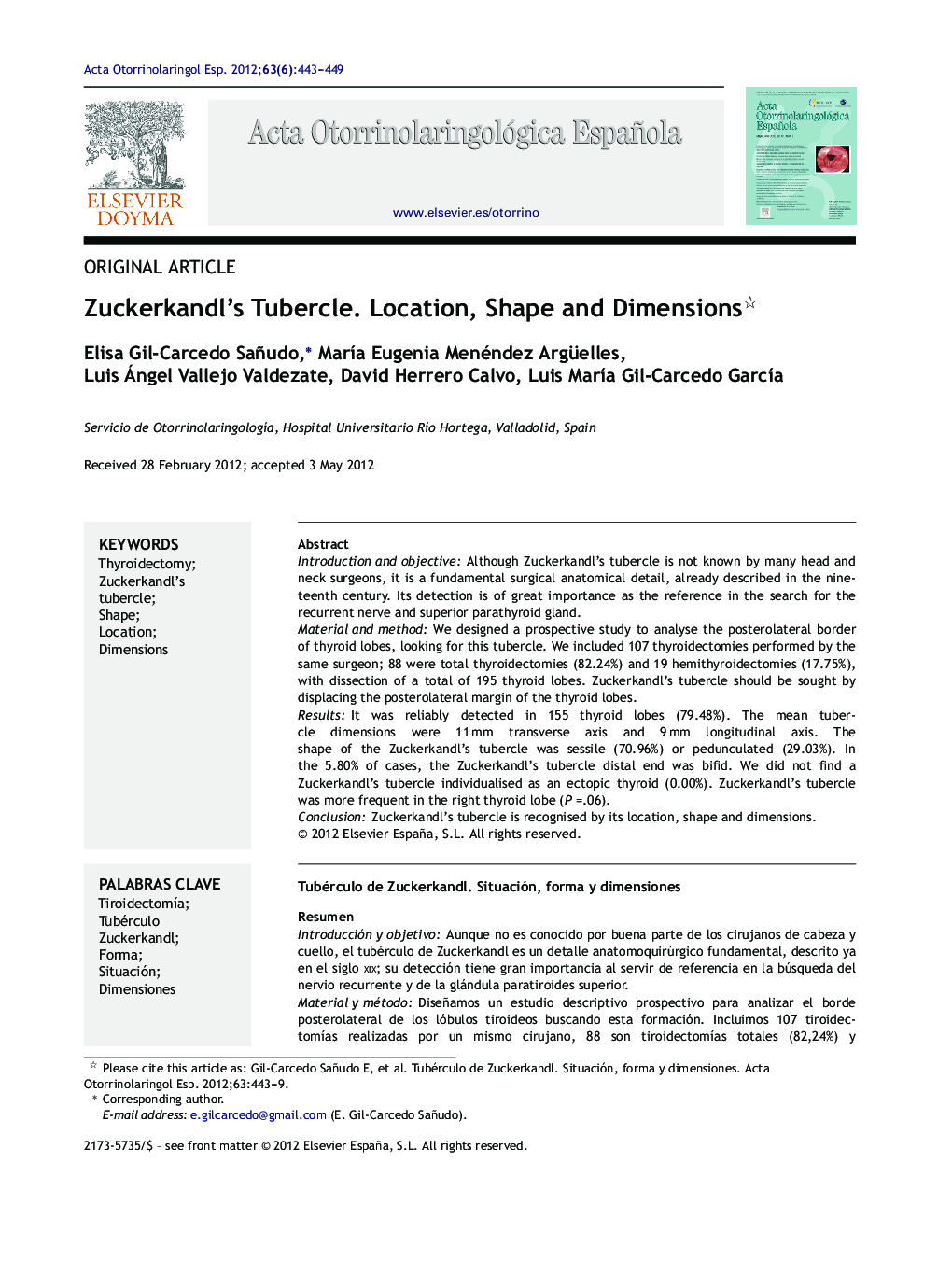| Article ID | Journal | Published Year | Pages | File Type |
|---|---|---|---|---|
| 4100919 | Acta Otorrinolaringologica (English Edition) | 2012 | 7 Pages |
Introduction and objectiveAlthough Zuckerkandl's tubercle is not known by many head and neck surgeons, it is a fundamental surgical anatomical detail, already described in the nineteenth century. Its detection is of great importance as the reference in the search for the recurrent nerve and superior parathyroid gland.Material and methodWe designed a prospective study to analyse the posterolateral border of thyroid lobes, looking for this tubercle. We included 107 thyroidectomies performed by the same surgeon; 88 were total thyroidectomies (82.24%) and 19 hemithyroidectomies (17.75%), with dissection of a total of 195 thyroid lobes. Zuckerkandl's tubercle should be sought by displacing the posterolateral margin of the thyroid lobes.ResultsIt was reliably detected in 155 thyroid lobes (79.48%). The mean tubercle dimensions were 11 mm transverse axis and 9 mm longitudinal axis. The shape of the Zuckerkandl's tubercle was sessile (70.96%) or pedunculated (29.03%). In the 5.80% of cases, the Zuckerkandl's tubercle distal end was bifid. We did not find a Zuckerkandl's tubercle individualised as an ectopic thyroid (0.00%). Zuckerkandl's tubercle was more frequent in the right thyroid lobe (P =.06).ConclusionZuckerkandl's tubercle is recognised by its location, shape and dimensions.
ResumenIntroducción y objetivoAunque no es conocido por buena parte de los cirujanos de cabeza y cuello, el tubérculo de Zuckerkandl es un detalle anatomoquirúrgico fundamental, descrito ya en el siglo xix; su detección tiene gran importancia al servir de referencia en la búsqueda del nervio recurrente y de la glándula paratiroides superior.Material y métodoDiseñamos un estudio descriptivo prospectivo para analizar el borde posterolateral de los lóbulos tiroideos buscando esta formación. Incluimos 107 tiroidectomías realizadas por un mismo cirujano, 88 son tiroidectomías totales (82,24%) y 19 hemitiroidectomías (17,75%); con lo que se disecaron 195 lóbulos tiroideos. El tubérculo de Zuckerkandl debe buscarse luxando hacia fuera el borde posterolateral de los lóbulos tiroideos.ResultadosSe detecta con seguridad en 155 lóbulos tiroideos (79,48%). El tubérculo tiene unas dimensiones medias de 11 mm de eje transversal, 9 mm de eje longitudinal. La forma del tubérculo de Zuckerkandl es sesil (70,96%) o pediculada (29,03%). En el 5,80% de los casos el extremo distal del tubérculo de Zuckerkandl es bífido. No encontramos un tubérculo de Zuckerkandl individualizado a modo de tiroides ectópico (0,00%). El tubérculo de Zuckerkandl es más frecuente en el lóbulo tiroideo derecho (p = 0,06).ConclusiónEl tubérculo de Zuckerkandl se reconoce por su situación, forma y dimensiones.
